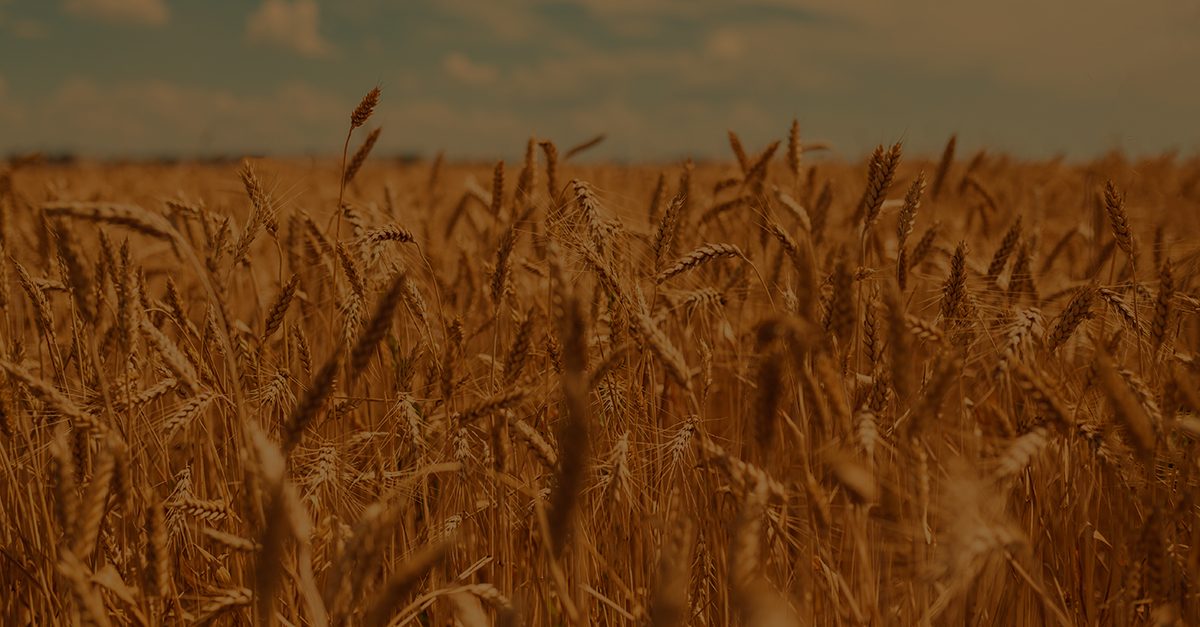“Who controls the food supply controls the people.” – Henry Kissinger
Key Points
- After decades of abundant food supply, abrupt changes in the agricultural commodity equilibrium may have long-lasting effects for consumers.
- Rising energy prices and geopolitical posturing appear likely to strain food delivery networks across the globe.
- Supply/demand dynamics in the agricultural sector provide opportunities for nimble investors to capitalize on the increasing dislocations in the supply chain.
The global agriculture and food network is an intricate, interconnected system. Any disruption to one part can have ripple effects throughout the entire network, often with unintended consequences. We believe that there is complacency about the supply of commodities in general, and agriculture in particular. Much of the world is accustomed to having a food supply that is readily available and cheap. However, there are numerous examples where food has the potential to spark economic and humanitarian crises. We see agriculture increasingly as both a driver and victim of geopolitical volatility.
The Haves and Have Nots
When investing in commodities, we refer to the concept of the ‘haves’ versus the ‘have nots.’ Consider the fact that approximately four-fifths of the world’s population lives in countries that are net importers of food. Using wheat as an example: in 2021, Russia and Ukraine were the world’s largest and fifth-largest exporters of wheat, respectively. According to the UN Food and Agriculture Organization, nearly 50 countries depend on Russia and Ukraine for more than 30% of their wheat imports (26 countries are over 50% reliant on the Black Sea region). Including all other agricultural products, Russia and Ukraine provide almost an eighth of the global calories traded. Approximately 86% of all global wheat exports come from only seven countries, with three countries holding nearly 68% of the total world’s wheat reserve.[1] To put these figures into context, one of the biggest commodity cartels, the Organization of the Petroleum Exporting Countries (OPEC), controls only one-third of global crude oil supply. Disruption in one region of ‘haves’, in this case Russia and Ukraine, could have massive ramifications for the global community that relies on stable trade flows.
Interconnection with Traditional Energy
Investors have become accustomed to seeing daily headlines about energy prices. The downstream effects of energy geopolitics on agricultural production, however, do not make the news. The link between food/agriculture and hydrocarbon has been one of the most underappreciated and dynamic relationships of the past several decades. One of the key reasons that food has never been more plentiful and secure is abundant hydrocarbons, which have allowed for synthetic fertilizers and cheaper horsepower to drive massive productivity increases. Over the last two centuries, for example, the amount of human labor required to produce a kilogram of wheat in the US fell from ten minutes to less than two seconds.
The largest portion of an average corn farm’s non-land cost is fertilizers, which account for approximately 25%. Nitrogen fertilizer, which has to be applied every year and is crucial to crop yield/health, is made from either natural gas or coal. Other crop chemicals (pesticides, herbicide, fungicide) account for approximately 13% of non-land costs and are mainly derived from petroleum. Finally, direct fuel and utilities account for another 6-8%.[2] In the current context, the global nitrogen industry has seen widespread curtailments as natural gas prices have spiked and supplies tightened following Russia’s weaponization of its natural gas supply. This will eventually affect applications/ and yields, and ultimately put upward pressure on grain prices. Should the global energy landscape become more geopolitically unstable, agriculture will unfortunately be one of the most affected areas.
Food Wars: Weaponization and Nationalization of Agriculture
Supply chains can be re-shored—with enough time and capital, a Taiwanese semiconductor lab can be replicated almost anywhere in the world. On the other hand, a farm cannot, as centuries of food production have demonstrated. What happens to global supply/demand balances if the ‘haves’ decide to use their agriculture leverage to advance national agendas? Prior to the Russian invasion, Ukraine exported 98% of its grain production through its ports in the Black Sea. Since the ports have been shut, grain export volume has struggled to find passage via rail and barge. The grains that have managed to make it out have faced massive delays and significantly increased cost. What if Odessa (main Ukraine Black Sea port) is the next Nord Stream (natural gas pipeline supplying Russian gas to Germany)? Furthermore, numerous governments have already acknowledged the scarcity of land and the importance of food security. For decades, Chinese state-owned and private companies have been on a global buying spree, snapping up land, grain elevators, and processing plants throughout the world. This is important to note— commodities are real assets; millions of acres of arable land with appropriate growing conditions cannot be recreated.
Investment Opportunities and Pitfalls
In the coming decades food demand and cost are likely to rise, and potential global shortages could drive instability in the world order. The investment implications fall into two main perspectives: 1) there is a genuine scarcity value in agricultural assets that is very difficult to replicate or substitute; when a mispriced asset class collides with inelastic, structural demand, the result will be a secular reset of prices (higher); and 2) food scarcity, volatility and insecurity will create massive dispersion between the ‘haves’ and ‘have nots’, which we believe should generate investment opportunities.
[1] Source: Schnitkey, G., C. Zulauf, K. Swanson and N. Paulson. “2022 Updated Crop Budgets.” farmdoc daily (11):162, Department of Agricultural and Consumer Economics, University of Illinois at Urbana-Champaign, December 7, 2021.
[2] Source: Ingini, Martina. “How Wheat Shortage Is Sparking a Global Food Crisis,” May 30, 2022. (https://earth.org/wheat-shortage).
PAST PERFORMANCE IS NOT NECESSARILY INDICATIVE OF FUTURE RESULTS. Any reference to a specific security, country or sector should not be construed as a recommendation to buy or sell this security, country or sector. Please note that strategy holdings and positioning are subject to change without notice. For additional Important Information, click on the link below.
Important information
For Institutional Clients Only. Issued by Newton Investment Management North America LLC ("NIMNA" or the "Firm"). NIMNA is a registered investment adviser with the US Securities and Exchange Commission ("SEC") and subsidiary of The Bank of New York Mellon Corporation ("BNY Mellon"). The Firm was established in 2021, comprised of equity and multi-asset teams from an affiliate, Mellon Investments Corporation. The Firm is part of the group of affiliated companies that individually or collectively provide investment advisory services under the brand "Newton" or "Newton Investment Management". Newton currently includes NIMNA and Newton Investment Management Ltd ("NIM") and Newton Investment Management Japan Limited ("NIMJ").
Material in this publication is for general information only. The opinions expressed in this document are those of Newton and should not be construed as investment advice or recommendations for any purchase or sale of any specific security or commodity. Certain information contained herein is based on outside sources believed to be reliable, but its accuracy is not guaranteed.
Statements are current as of the date of the material only. Any forward-looking statements speak only as of the date they are made, and are subject to numerous assumptions, risks, and uncertainties, which change over time. Actual results could differ materially from those anticipated in forward-looking statements. No investment strategy or risk management technique can guarantee returns or eliminate risk in any market environment and past performance is no indication of future performance.
Information about the indices shown here is provided to allow for comparison of the performance of the strategy to that of certain well-known and widely recognized indices. There is no representation that such index is an appropriate benchmark for such comparison.
This material (or any portion thereof) may not be copied or distributed without Newton’s prior written approval.
In Canada, NIMNA is availing itself of the International Adviser Exemption (IAE) in the following Provinces: Alberta, British Columbia, Manitoba and Ontario and the foreign commodity trading advisor exemption in Ontario. The IAE is in compliance with National Instrument 31-103, Registration Requirements, Exemptions and Ongoing Registrant Obligations.





